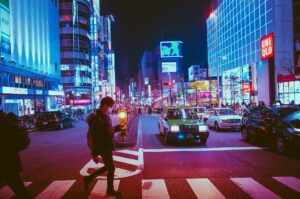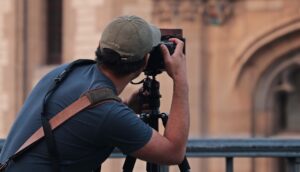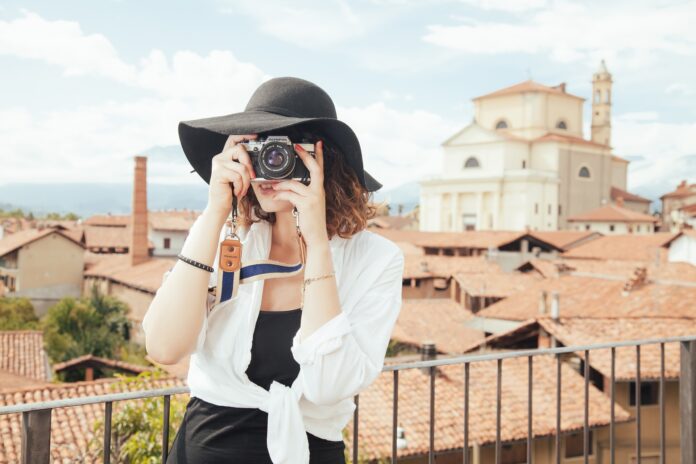Stolen photos are images that have been unlawfully taken, copied, or used without the permission of the original creator or copyright holder. This can occur in various contexts, including online platforms, social media, and print media. We’ll discuss in this article about stolenphoto.
Stolen photos can range from professional photographs to personal snapshots, and the act of stealing them can have serious consequences for both the creator and the person who unlawfully uses them. It’s important to be aware of copyright laws and to respect the rights of photographers and creators when using or sharing images.
Introduction
In today’s digital age, the widespread availability of photographs online has led to an increase in the unauthorized use and distribution of images, commonly known as stolen photos. From professional photographers to casual hobbyists, individuals invest time, effort, and creativity in capturing meaningful moments and stunning visuals. However, the internet’s vastness and accessibility have made it easy for others to unlawfully take, reproduce, and share these images without permission. We’ll discuss in this article about stolenphoto.
Stolen photos encompass a wide range of scenarios, including copyright infringement, image theft, and unauthorized use on social media platforms, websites, and print media. Whether it’s a photographer’s livelihood or an individual’s cherished memories, the impact of stolen photos extends far beyond mere pixels on a screen.
In this digital landscape, understanding the significance of protecting intellectual property rights and respecting the creative efforts of photographers and content creators is paramount. This introduction sets the stage for exploring the causes, consequences, prevention methods, and legal recourse associated with stolen photos, shedding light on the importance of upholding ethical and legal standards in the digital era.
Causes of Stolen Photos
Certainly! Here are some causes of stolen photos:
Lack of Awareness about Copyright Laws:
- Many individuals may not fully understand copyright laws or intellectual property rights, leading them to mistakenly believe that they can freely use any image they find online without permission.
Ease of Access to Digital Images Online:
- With the proliferation of image-sharing platforms and search engines, it’s effortless for individuals to find and download images without considering the rights of the original creators. We’ll discuss in this article about stolenphoto.
Desire for Free or Cheap Content:
- Some individuals may intentionally seek to obtain images without paying for them, whether for personal use or to save on costs for their projects or publications.
Malicious Intent:
- In some cases, individuals may steal photos with malicious intent, such as using them for identity theft, fraud, or other illegal activities.
Lack of Proper Attribution:
- Even when individuals intend to give credit to the original creator, they may inadvertently fail to do so or misattribute the source of the image, leading to misunderstandings and potential copyright violations. We’ll discuss in this article about stolenphoto.
These causes highlight the importance of raising awareness about copyright laws and intellectual property rights, as well as promoting ethical behavior and respect for the creative efforts of photographers and content creators.
Consequences of Stolen Photos

Certainly! Here are some consequences of stolen photos:
Financial Loss for Photographers and Creators:
- When photos are stolen and used without permission, photographers and creators may suffer financial losses due to missed opportunities for licensing or selling their work.
Damage to Reputation and Credibility:
- Stolen photos can tarnish the reputation and credibility of photographers and creators, as their work may be misrepresented or associated with unauthorized usage. We’ll discuss in this article about stolenphoto.
Legal Consequences:
- Copyright infringement and unauthorized use of photos can lead to legal action, including lawsuits and monetary penalties, for both the individuals who stole the photos and those who used them without permission.
Emotional Impact on Victims:
- The unauthorized use of photos can have emotional consequences for photographers and creators, including feelings of violation, frustration, and helplessness, as their creative work is exploited without consent. We’ll discuss in this article about stolenphoto.
These consequences underscore the importance of protecting intellectual property rights and respecting the rights of photographers and creators. It’s crucial for individuals and businesses to understand the legal and ethical implications of using photos without permission and to take appropriate measures to prevent copyright infringement.
Methods of Photo Theft
Certainly! Here are some methods of photo theft:
Unauthorized Downloading and Use:
- Individuals may download photos from websites, social media platforms, or other online sources without permission and use them for their own purposes, such as on personal websites, blogs, or social media profiles. We’ll discuss in this article about stolenphoto.
Re-posting Without Permission:
- People may re-post photos found online without obtaining permission from the original creator, sharing them on social media platforms or other websites without acknowledging the source or obtaining the necessary rights.
Altering or Manipulating Images Without Consent:
- Photo thieves may alter or manipulate images without the creator’s consent, such as cropping, editing, or adding filters to photos and then passing them off as their own or using them for commercial purposes. We’ll discuss in this article about stolenphoto.
Selling or Distributing Images Without Rights:
- In some cases, stolen photos may be sold or distributed without the proper rights or permissions, such as through stock photo websites, online marketplaces, or print publications, resulting in financial gain for the thief at the expense of the original creator.
These methods highlight the various ways in which photos can be unlawfully obtained and used without the permission of the original creator, underscoring the importance of protecting intellectual property rights and enforcing copyright laws. We’ll discuss in this article about stolenphoto.
Prevention and Protection
Certainly! Here are some methods for prevention and protection against stolen photos:
Watermarking Images:
- Adding a visible watermark to photos can deter unauthorized use by making it clear that the image is copyrighted and owned by a specific individual or organization.
Using Copyright Notices and Metadata:
- Including copyright notices and metadata in photo files can help establish ownership and provide information about usage rights, making it easier to enforce copyright protection. We’ll discuss in this article about stolenphoto.
Registering Copyrights for Photos:
- Registering photos with the appropriate copyright office can provide legal protection and enable photographers and creators to pursue legal action against individuals or entities that unlawfully use their work.
Monitoring Online Presence and Usage of Images:
- Regularly monitoring online platforms, search engines, and social media networks for instances of unauthorized use or infringement can help photographers and creators identify and address stolen photos promptly. We’ll discuss in this article about stolenphoto.
These prevention and protection methods can help photographers and creators safeguard their intellectual property rights and reduce the risk of photos being stolen or misused without permission. It’s essential to take proactive measures to protect creative work and enforce copyright laws effectively.
Stolenphoto
The unauthorized use of stolen photos represents a significant challenge for photographers in the digital age. Stolen photos not only infringe upon the creator’s intellectual property rights but also undermine their ability to earn a livelihood from their work. Photographers invest time, skill, and resources into capturing and editing their images, making them valuable assets that deserve protection. We’ll discuss in this article about stolenphoto.
However, the ease of digital sharing and the anonymity of the internet have made it increasingly difficult to prevent photo theft. Despite this, photographers can take proactive measures to safeguard their work, such as employing digital watermarking, monitoring online platforms for unauthorized use, and understanding their legal rights under copyright law. Additionally, building awareness about the importance of respecting intellectual property rights within the photography community and beyond can help deter potential infringers.
While combating stolen photos can be challenging, photographers can assert their rights and seek recourse through legal channels when necessary, ultimately working to preserve the integrity of their creative endeavors. We’ll discuss in this article about stolenphoto.
Legal Recourse for Stolen Photos

Certainly! Here are some legal recourse options for dealing with stolen photos:
Copyright Infringement Claims:
- Photographers and creators can pursue copyright infringement claims against individuals or entities that unlawfully use their photos without permission. This involves asserting their legal rights to ownership and seeking remedies such as injunctions, damages, and attorney’s fees through civil litigation. We’ll discuss in this article about stolenphoto.
Digital Millennium Copyright Act (DMCA) Takedown Notices:
- Under the DMCA, photographers and creators can issue takedown notices to online platforms, web hosts, or service providers hosting stolen photos. These notices request the removal of infringing content and require platforms to comply with copyright laws or risk liability for copyright infringement themselves.
Seeking Legal Advice and Representation:
- Photographers and creators may seek legal advice and representation from intellectual property attorneys specializing in copyright law. Legal professionals can assess the merits of copyright infringement claims, guide clients through the legal process, and advocate on their behalf in court proceedings. We’ll discuss in this article about stolenphoto.
Pursuing Compensation for Damages:
- In addition to seeking removal of stolen photos, photographers and creators may pursue compensation for damages resulting from copyright infringement, such as lost licensing revenue, reputational harm, or emotional distress. This can be pursued through negotiations, settlements, or court judgments.
These legal recourse options empower photographers and creators to assert their rights, protect their intellectual property, and hold infringers accountable for unauthorized use of their photos. It’s essential to understand and exercise legal rights effectively to address stolen photos and enforce copyright protection. We’ll discuss in this article about stolenphoto.
Reporting Stolen Photos
Reporting stolen photos is an important step in addressing copyright infringement and protecting the rights of photographers and creators. Here are some ways to report stolen photos:
Notifying Website Owners or Hosting Platforms:
- If you discover stolen photos on a website or online platform, you can directly contact the website owner or hosting provider to report the copyright infringement. Many websites have procedures in place for submitting copyright infringement complaints, and they may remove the infringing content upon receiving a valid notice. We’ll discuss in this article about stolenphoto.
Filing Complaints with Relevant Authorities:
- You can file complaints with relevant authorities, such as copyright offices, law enforcement agencies, or regulatory bodies, depending on the severity of the infringement and jurisdictional considerations. These authorities may investigate the matter and take appropriate enforcement actions against infringers.
Utilizing Online Reporting Tools and Platforms for Copyright Infringement:
- Various online reporting tools and platforms are available for reporting copyright infringement and submitting takedown requests for stolen photos. These tools may streamline the process of reporting and help ensure that infringing content is promptly removed from online platforms. We’ll discuss in this article about stolenphoto.
By reporting stolen photos, you can help protect the rights of photographers and creators, deter future infringements, and uphold the integrity of intellectual property laws. It’s essential to follow proper procedures and provide sufficient evidence of copyright ownership when reporting copyright infringement to achieve effective resolution.
Conclusion
In conclusion, the prevalence of stolen photos in today’s digital landscape underscores the importance of protecting intellectual property rights and respecting the creative efforts of photographers and content creators. From copyright infringement to unauthorized use and distribution, the unauthorized appropriation of photos can have far-reaching consequences for both creators and users alike. We’ll discuss in this article about stolenphoto.
Addressing stolen photos requires a multifaceted approach, including raising awareness about copyright laws, implementing prevention measures, and pursuing legal recourse when necessary. By watermarking images, using copyright notices, and registering copyrights, photographers and creators can proactively protect their work and assert their rights.
Furthermore, reporting stolen photos to website owners, hosting platforms, and relevant authorities is essential for enforcing copyright protection and holding infringers accountable. Through collective efforts to combat copyright infringement and promote ethical behavior, we can foster a digital environment that values creativity, respects intellectual property rights, and supports the integrity of artistic expression.
In essence, addressing stolen photos is not just about protecting individual works; it’s about upholding the principles of fairness, respect, and accountability in the digital age. By working together to address this issue, we can create a more equitable and sustainable ecosystem for creative expression and innovation
FAQs
What are stolen photos?
- Stolen photos are images that have been unlawfully taken, copied, or used without the permission of the original creator or copyright holder.
How do stolen photos occur?
- Stolen photos can occur through various methods, including unauthorized downloading and use, re-posting without permission, altering or manipulating images without consent, and selling or distributing images without rights. We’ll discuss in this article about stolenphoto.
What are the consequences of stolen photos?
- The consequences of stolen photos can include financial loss for photographers and creators, damage to reputation and credibility, legal consequences such as lawsuits and fines, and emotional impact on victims. We’ll discuss in this article about stolenphoto.
How might I forestall my photographs from being taken?
- To prevent photos from being stolen, you can use methods such as watermarking images, using copyright notices and metadata, registering copyrights for photos, and monitoring online presence and usage of images. We’ll discuss in this article about stolenphoto.
What legal recourse do I have if my photos are stolen?
- Legal recourse options for dealing with stolen photos include pursuing copyright infringement claims, issuing Digital Millennium Copyright Act (DMCA) takedown notices, seeking legal advice and representation, and pursuing compensation for damages.
How can I report stolen photos?
- You can report stolen photos by notifying website owners or hosting platforms, filing complaints with relevant authorities such as copyright offices or law enforcement agencies, and utilizing online reporting tools and platforms for copyright infringement. We’ll discuss in this article about stolenphoto.
What should I do if I discover that I’ve used a stolen photo?
- If you discover that you’ve used a stolen photo, you should immediately remove the infringing content, apologize to the original creator, and take steps to prevent future copyright infringements, such as obtaining proper permissions or using licensed stock photos. We’ll discuss in this article about stolenphoto.
How can I educate others about the importance of respecting copyright laws?
- You can educate others about the importance of respecting copyright laws by raising awareness about intellectual property rights, sharing information about copyright infringement consequences, and promoting ethical behavior and respect for creative works.
These FAQs provide insights into the issue of stolen photos, including causes, consequences, prevention methods, legal recourse, and reporting procedures, helping individuals navigate the complexities of copyright protection and enforcement in the digital age.

